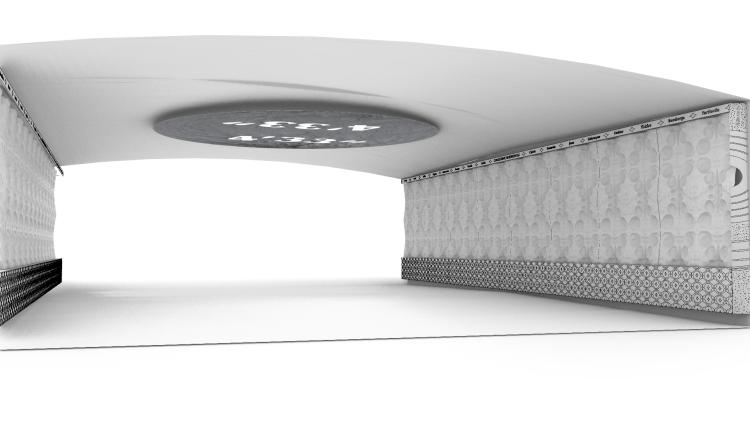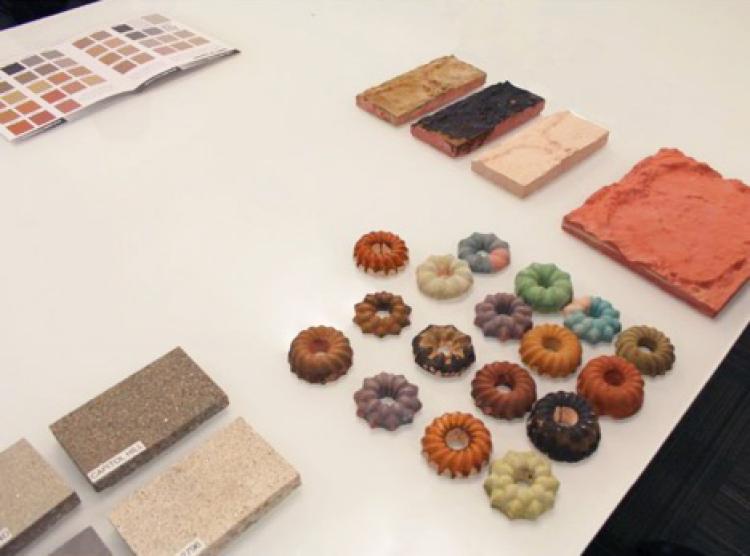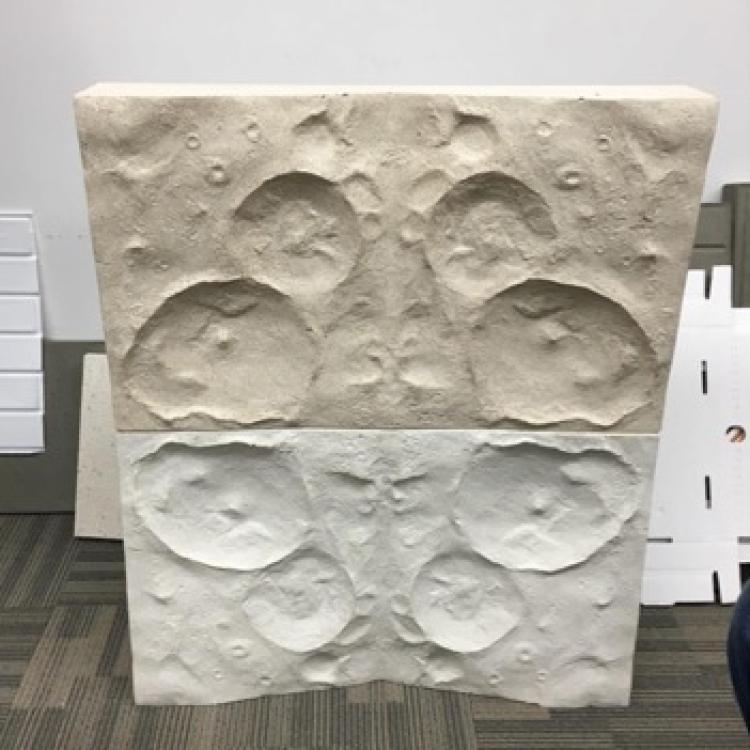Pushing Boundaries: An out-of-this-world art project
Image: Sam Brown, fourth-year mechanical engineering student; and Martha Russo, CU instructor, artist (MFA’95)
A large-scale campus collaboration is underway to visually pay homage to the significant contributions CU Boulder has made to space exploration. The SpaceTime Underpass project will be a permanent public art installation inside the Regent pedestrian underpass.

Projected design of Regent underpass; rendering by Demiurge art fabricators, Denver
A team of CU Boulder students, faculty and staff from engineering, art and art history, environmental design and business are collaborating on the project, spearheaded by Martha Russo, an installation artist and CU Boulder art instructor, and led by Denver artist Bruce Price.
The Regent underpass is a high-traffic east entrance to a pedestrian path that extends across campus. Every day, 3,000 people use the underpass when the university is in session.
“We want the installation to be visually stunning,” Russo said. “It won’t just be a static piece of art. We want people to enter the underpass and be delighted and amazed, and to wonder about all the elements we’ve added.”
The project started with a request sent to faculty in the Department of Art and Art History to submit proposals and ideas for installing permanent public art in the underpass. Since Russo is a sculptor practiced at large installation art, and teaches a class about sculpture, installation and public art with students engaging in internships with artists and art fabricators, she jumped at the opportunity to get her students involved.
Students in Russo’s course Art, Design & Engineering: Cross-Disciplinary Thinking and Making are at the core of the design and fabrication teams working with local professional art fabricators in Denver and Boulder.
“The project is a continuing dialogue with many campus programs,” Russo said. “Our hope is that the underpass will be a catalyst for discussions, a place to stage performances as well as a visual teaching tool. We want to create an ongoing dialogue across many fields of inquiry and disciplines.”
The space theme for the underpass dovetails with the location of nearby Fiske Planetarium and the scale model solar system, a memorial to astronaut Ellison Onizuka, a CU graduate who died in the 1986 explosion of the space shuttle Challenger. The underpass is positioned between the Mars and Jupiter sculptures, which is where the asteroid belt in our solar system is located.

Sample finishes for the various materials being used in the underpass
Influenced by CU Boulder’s relationship to space exploration, the underpass will be fitted with colored concrete relief panels textured with 3D topographical imagery of the surface of the dwarf planet Vesta, located in the asteroid belt.
The concrete frieze will have a repeating pattern based on the three large craters on Vesta. The pattern is called “the snowman” because the craters are stacked one on top of the other. The names of CU alumni, faculty and staff who have advanced CU Boulder’s contributions to space science and exploration will be engraved on the frieze.
As a reference to the silence of space, a circular stainless-steel disc will be attached to the ceiling of the underpass alluding to the enigmatic, avant-garde piece by experimental composer John Cage. Titled 4’33” (pronounced 4 minutes, 33 seconds), the composition has no music—only silence.
Students get hands-on experience
The idea for the SpaceTime Underpass was conceived in Russo’s interdisciplinary art, design and engineering class composed of students in studio arts, engineering, environmental design, business and communication. Students learned about sculpture, with an emphasis on making and installing large-scale public art.
Last year, Russo asked artist Bruce Price to help develop a project with her students. To kick off the group project, students were encouraged to draw inspiration from three themes—geology, digital media and conviviality—when conceptualizing their art project. Students picked Pluto, digital fabrication processes using laser cutters and CNC machines, and music by the John Cage.

First prototype of the wall casts
Price taught undergraduate art for 20 years while serving as director at the Institute for Experimental Studies at the Rocky Mountain College of Art & Design.
“For Martha’s class, the three domains of digital media, geology and conviviality were selected to create a field for ideas and actions,” Price said. “My influence in this selection was driven by my interest in radical difference. The point (of the exercise) was to bring together disperse domains to create an arena for actions in the production of difference.”
Price said what he hopes students learned by working on a real-world public art project is the “experience in the cultivation and importance of difference, confusion, uncertainty and creativity in the production of the new.”
After consulting with Bryan Holler, a doctoral student in astrophysical and planetary sciences who was working on his thesis about Pluto, students made ceramic plates embossed with surface imagery from Pluto. The nine-sided plates (nine for Pluto’s position in the solar system) were used at a reception kicking off the SpaceTime Underpass project in fall 2017 at the Visual Arts Complex.
“What’s fantastic working with the students is that everybody is so excited about it,” Russo said. “I feel like we’ve created a community around this project.”
Fundraising is underway with a project install date of June 2020.


